Mondrian-Evolution: on display the evolution of Piet Mondrian's pictorial language
It is difficult for the title of an art exhibition to instantly succeed in telling the visitor the thematic narrative suggested by the works on display. In the case of Mondrian-Evolution, currently at the Kunstsammlung Nord-Rhein Westfalen in Düsseldorf from Oct. 29, 2022 to Feb. 12, 2023, it could hardly be titled otherwise. Common intent with the Milan exhibition Piet Mondrian. From Figuration to Abstraction, held at MUDEC from Nov. 24, 2021 to March 27, 2022, is to bring the visitor closer to the incredible variety of pictorial styles traversed by the Dutch artist, before his landing in Neoplasticism from the middle of the second decade of the 20th century.
Produced by the Beyeler Foundation Basel and the Museum of Modern and Contemporary Art Düsseldorf, in collaboration with the Kunstmuseum Den Haag, the exhibition presents as many as ninety canvases by Piet Cornelis Mondriaan (Amersfoort, 1872 - New York, 1944) on the occasion of the one hundred and fiftieth anniversary of his birth. The curators, Kathrin Beßen and Susanne Meyer-Büser, have chosen (and exhibited) the works very well to tell the artistic story of one of the most significant artists of the 20th century. International loans (such as those from MoMA in New York, the Tate Gallery in London, and the Kimbell Art Museum in Texas) played no small part in the exhibition’s success. The exhibition is divided into six sections(Early Landscapes, An Explosion of Colors, Encounter with Cubism, Signs, Lines, Planes, Neoplasticism, and Piet’s Rhythm) and focuses on the artist’s remarkable career, from his early landscape beginnings to his later abstract works, in a narrative that traces the connections that exist between the paintings he made during his five-decade career. For this reason, it is a “choral” exhibition, if you want to call it that, in the sense that no particular painting emerges. Rather, the “focal points” of the exhibition emerge from the groups of subjects that Mondrian depicted, in different painting styles and with the study of different illuminations, throughout his career: Dutch mills, the landscapes of his homeland, the church in Domburg, the sand dunes of Belgian beaches. Visitors take a very interesting journey that will lead them to learn about Mondrian’s art through the various styles that influenced the painter: we begin with the Dutch landscape of the late 19th century, the style of the De Haan school of painting, influenced by Realism and Impressionism, in which Dutch interiors and landscapes constitute the main motifs, as shown in the small and precious portrait of Woman with a Spindle (1893-1896).
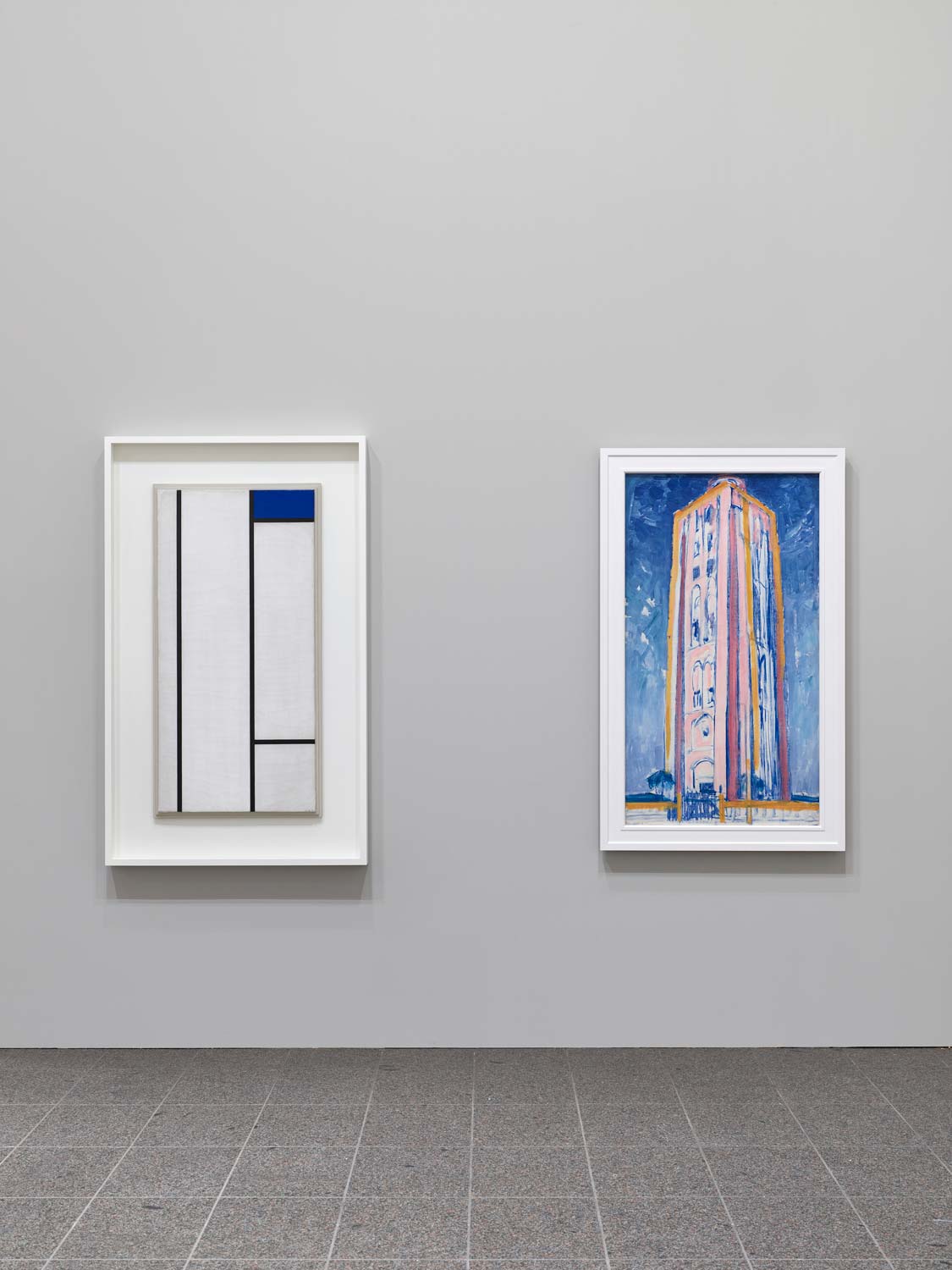
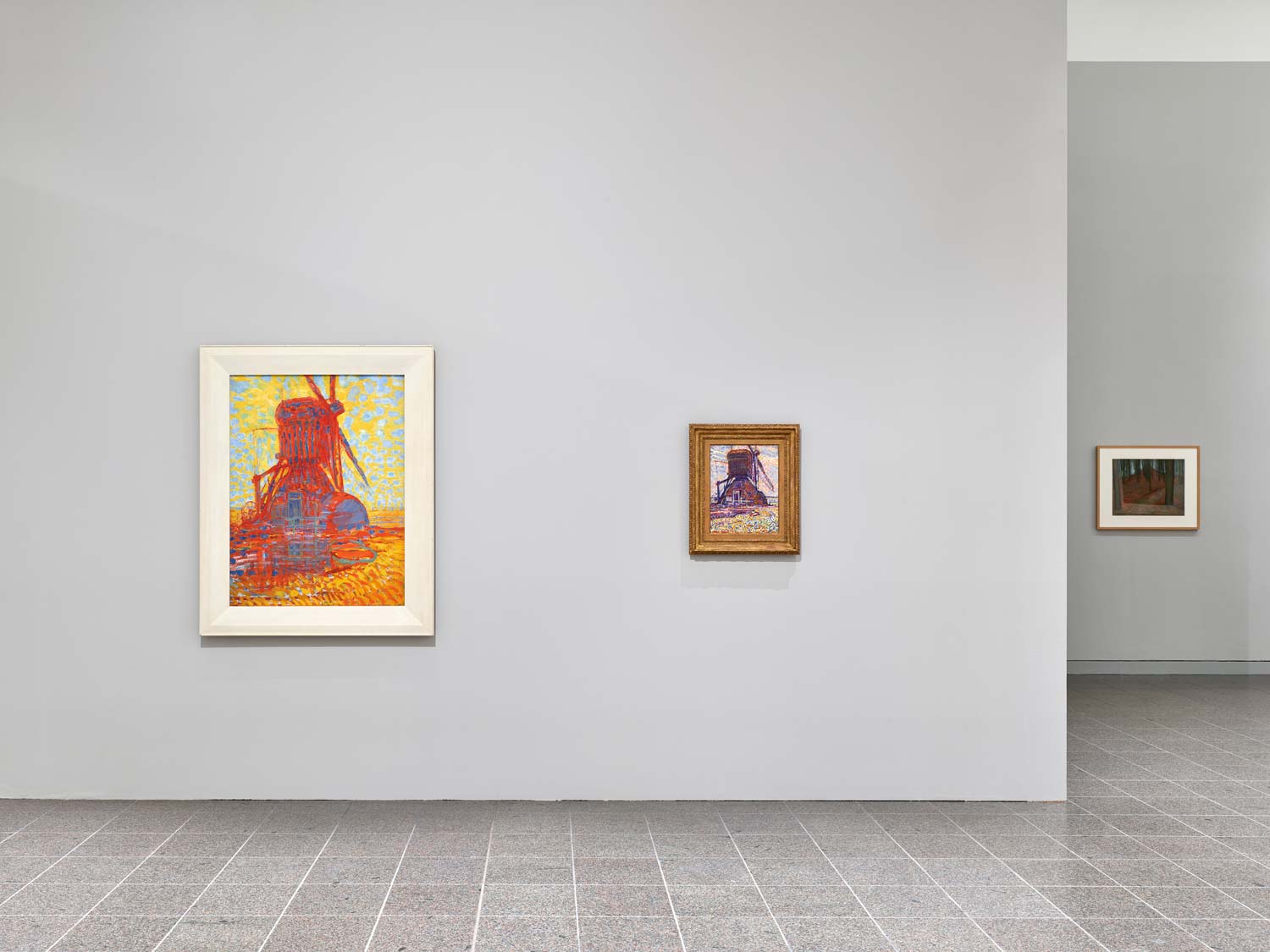
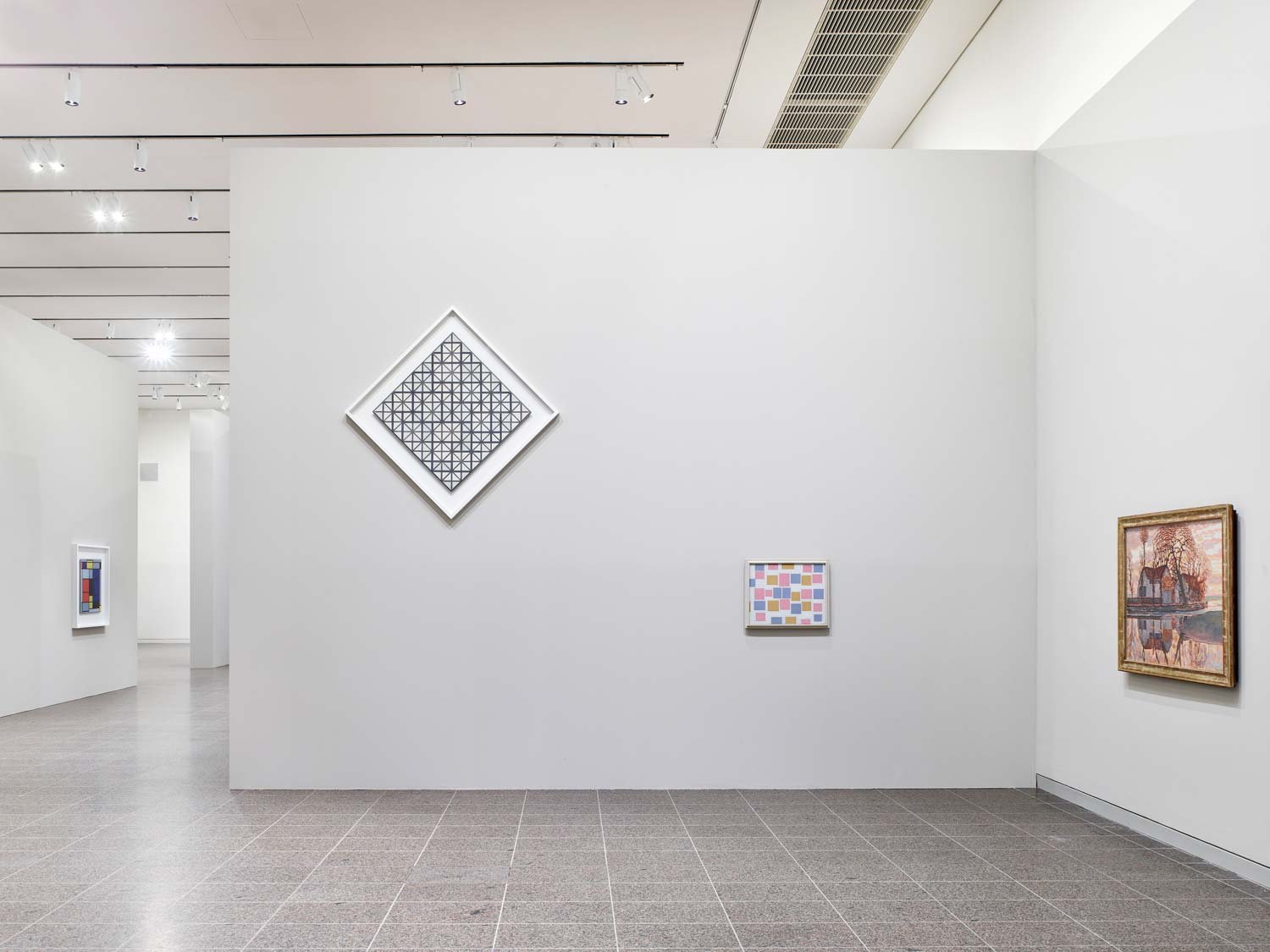
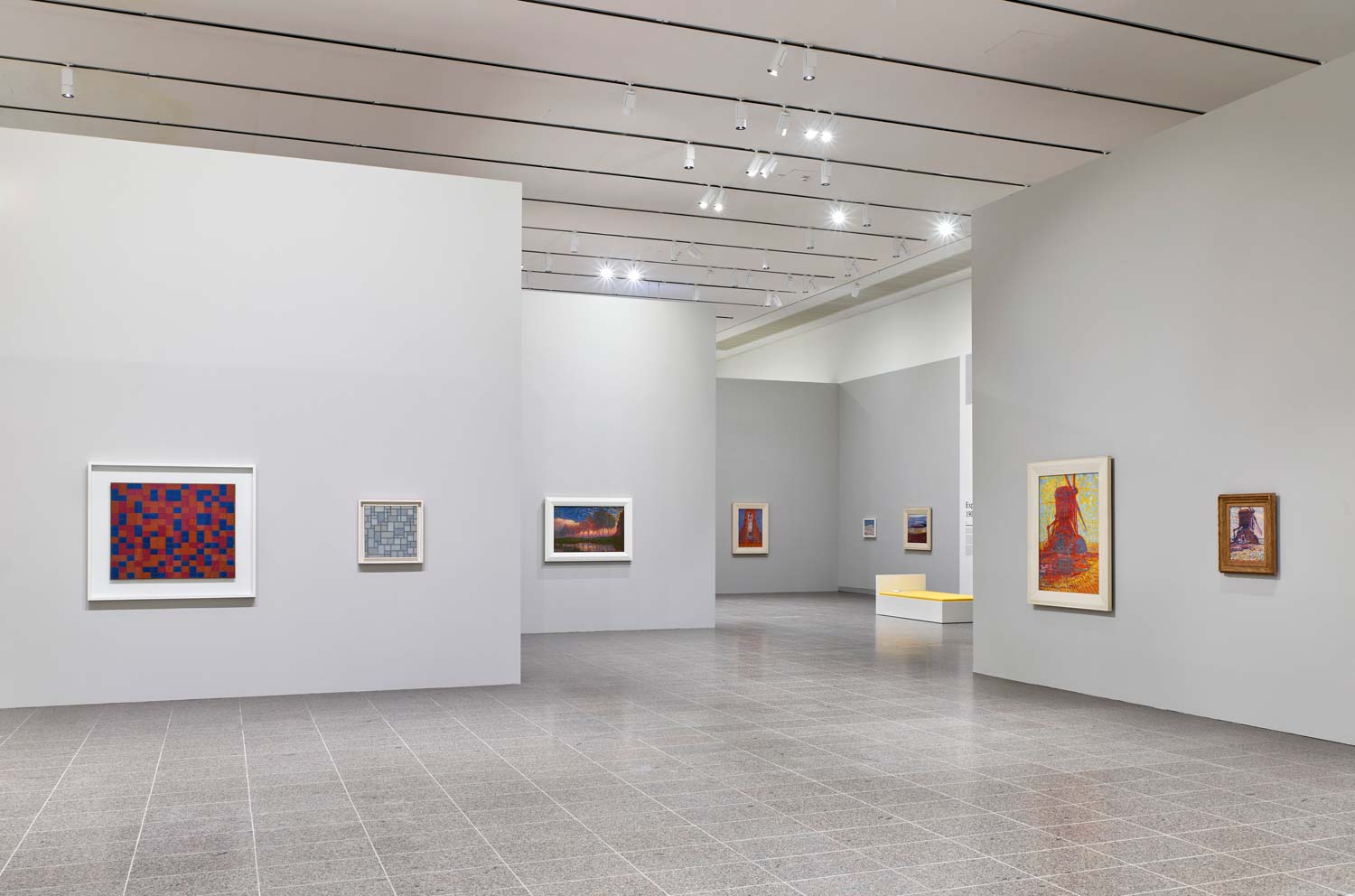
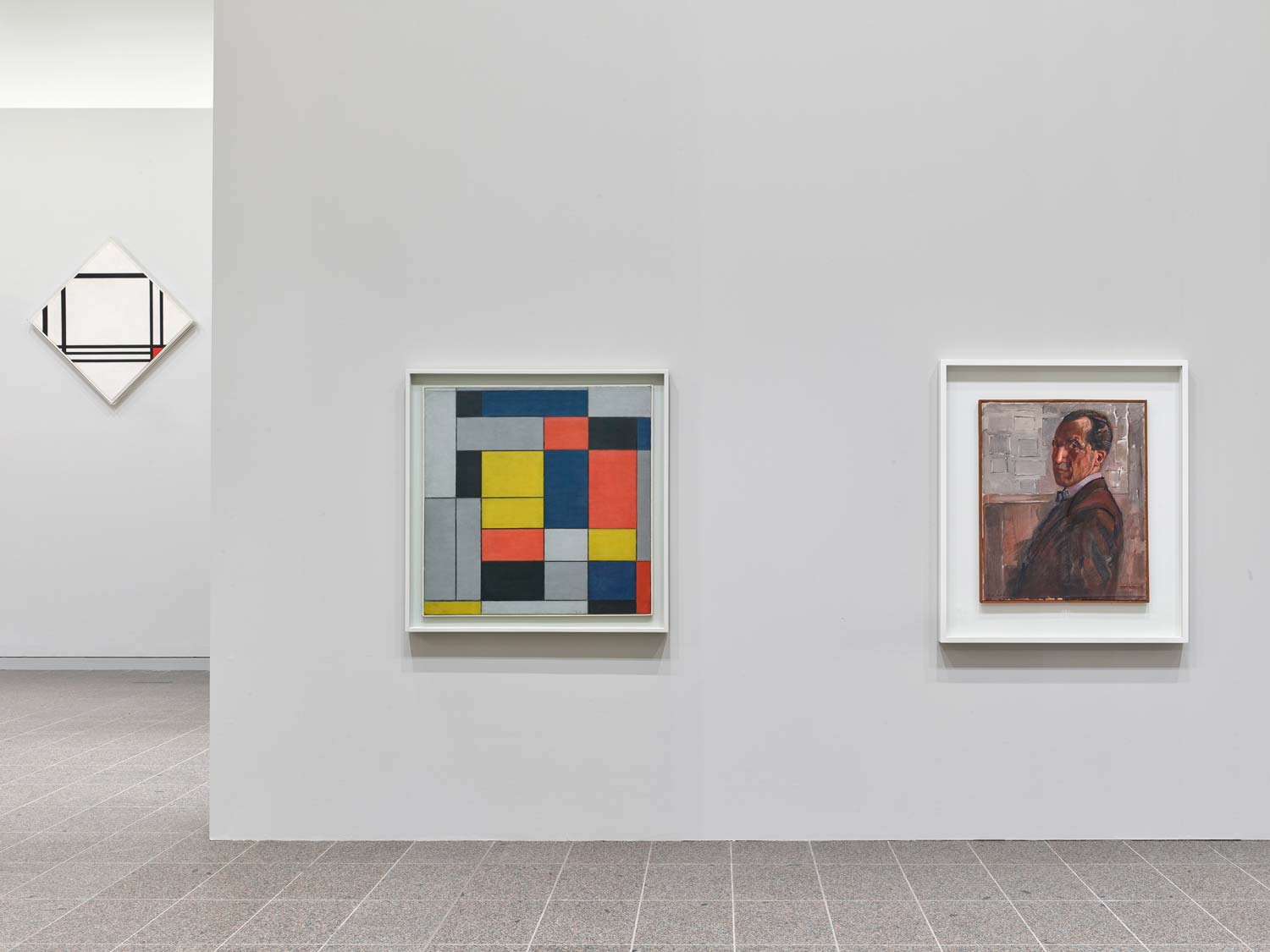
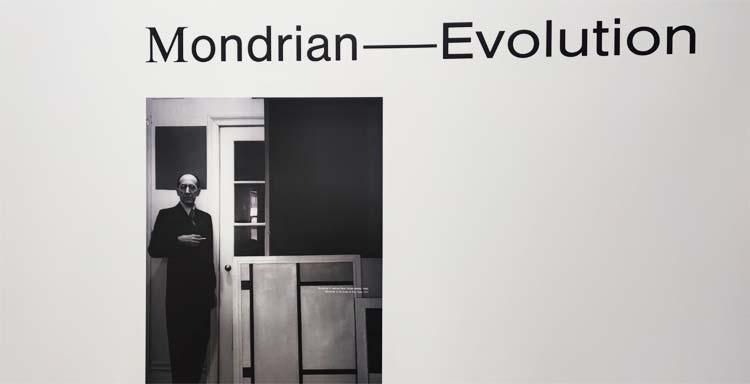
It continues, then, with the expressionist and symbolist works, conditioned by the works of Vincent van Gogh, Jan Toorop and the theosophical philosophy that Mondrian knows from 1908, thanks to his friendship with the painters Jacoba van Heemskerck and Marie Tak van Poortvliet and through the texts of Rudolf Steiner and Johann Wolfgang Goethe. This phase is characterized by the search for a pictorial language that expresses the idea of the universal. When Mondrian moved to Paris in 1911, he could only meet and adhere to the Cubist current of Pablo Picasso and Georges Braques: works from these years are those that see a gradual reduction of color in the palette used and the presence of abstract motifs in which forms are completely deconstructed. Without the encounter with Analytic Cubism, there probably would not have been Neoplasticism and the De Stijl current either, in which the pictorial language consists of rectangular lines, planes, and signs that are shorthand abbreviations of reality.
De Stijl was the name of the magazine Mondrian founded in 1917 after meeting painter and art historian Theo van Doesburg. Neoplastic paintings, consisting in principle of the infinite possibilities of combining black and white lines meeting at right angles, and the primary colors red, yellow and blue, formed the basis of Mondrian’s fame. His lifestyle and passion for jazz made him one of the most important protagonists of the Parisian avant-garde.
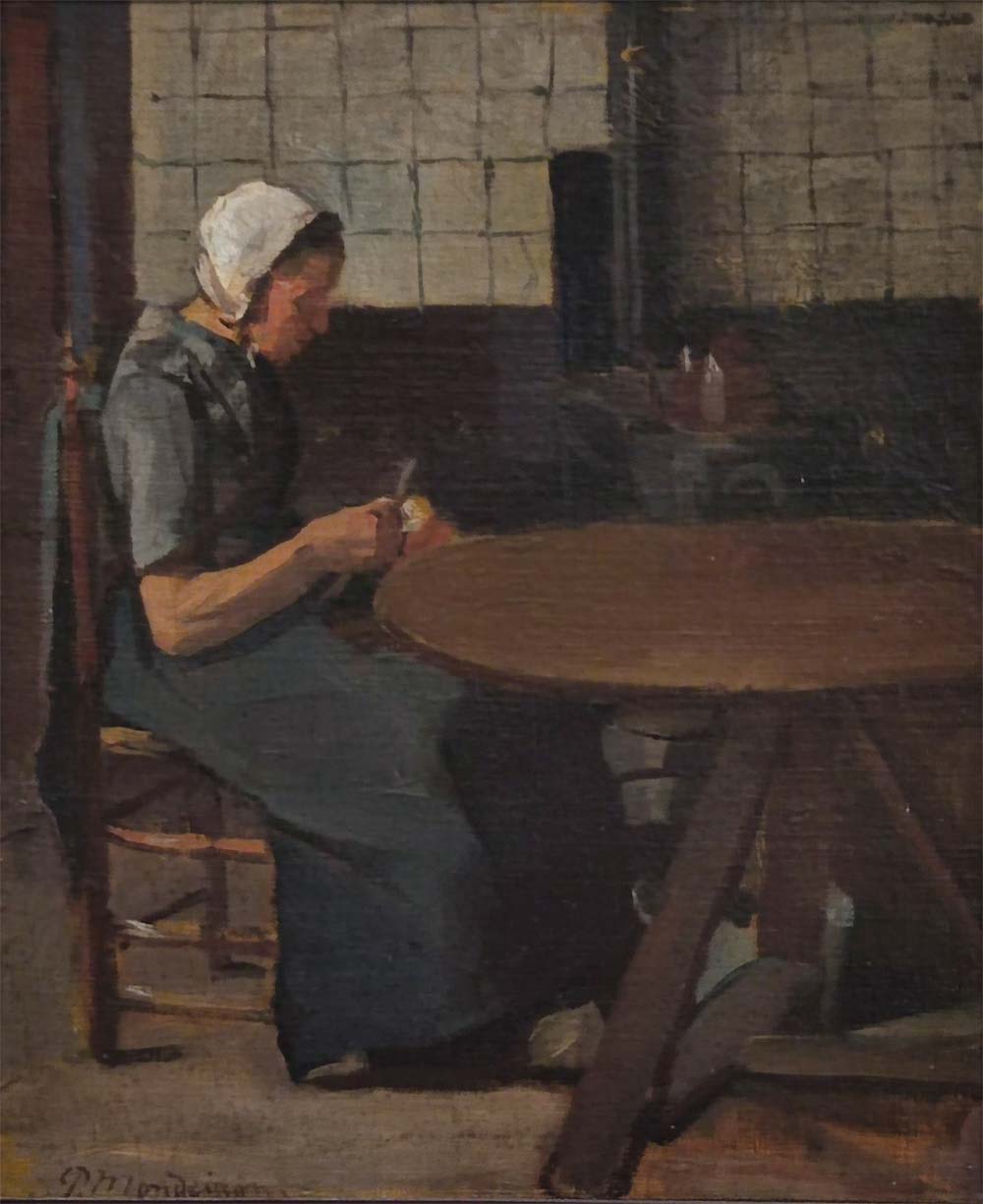
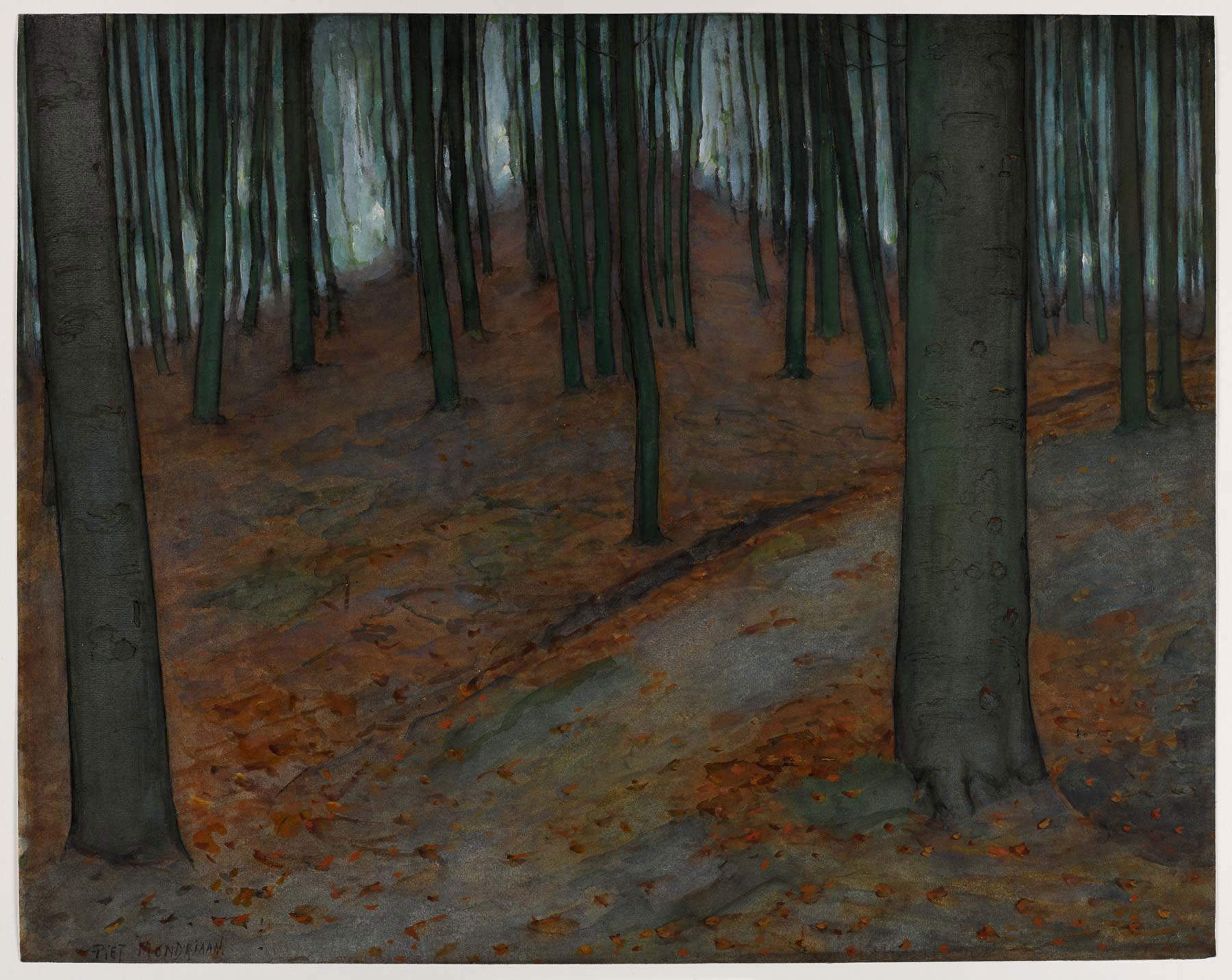
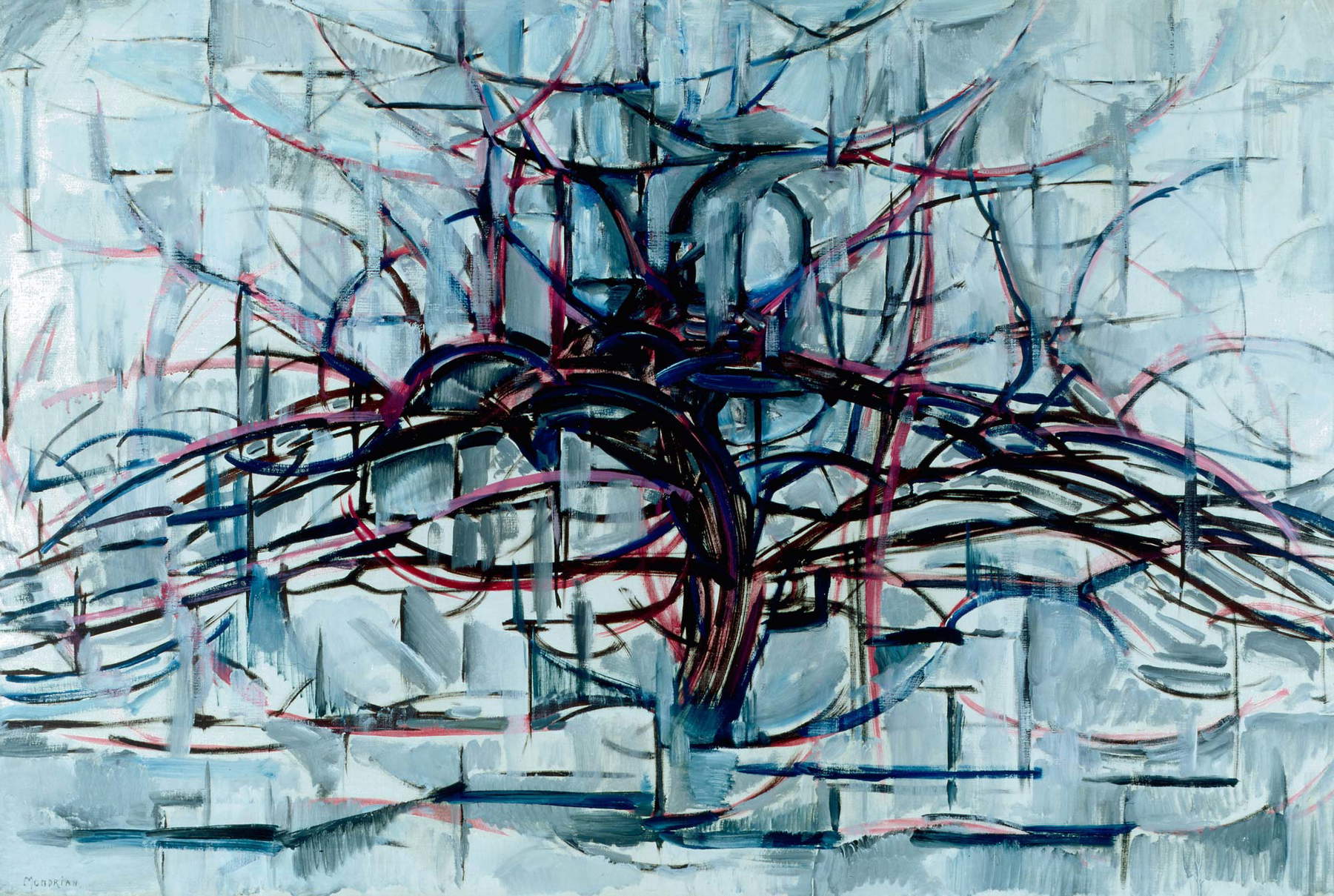
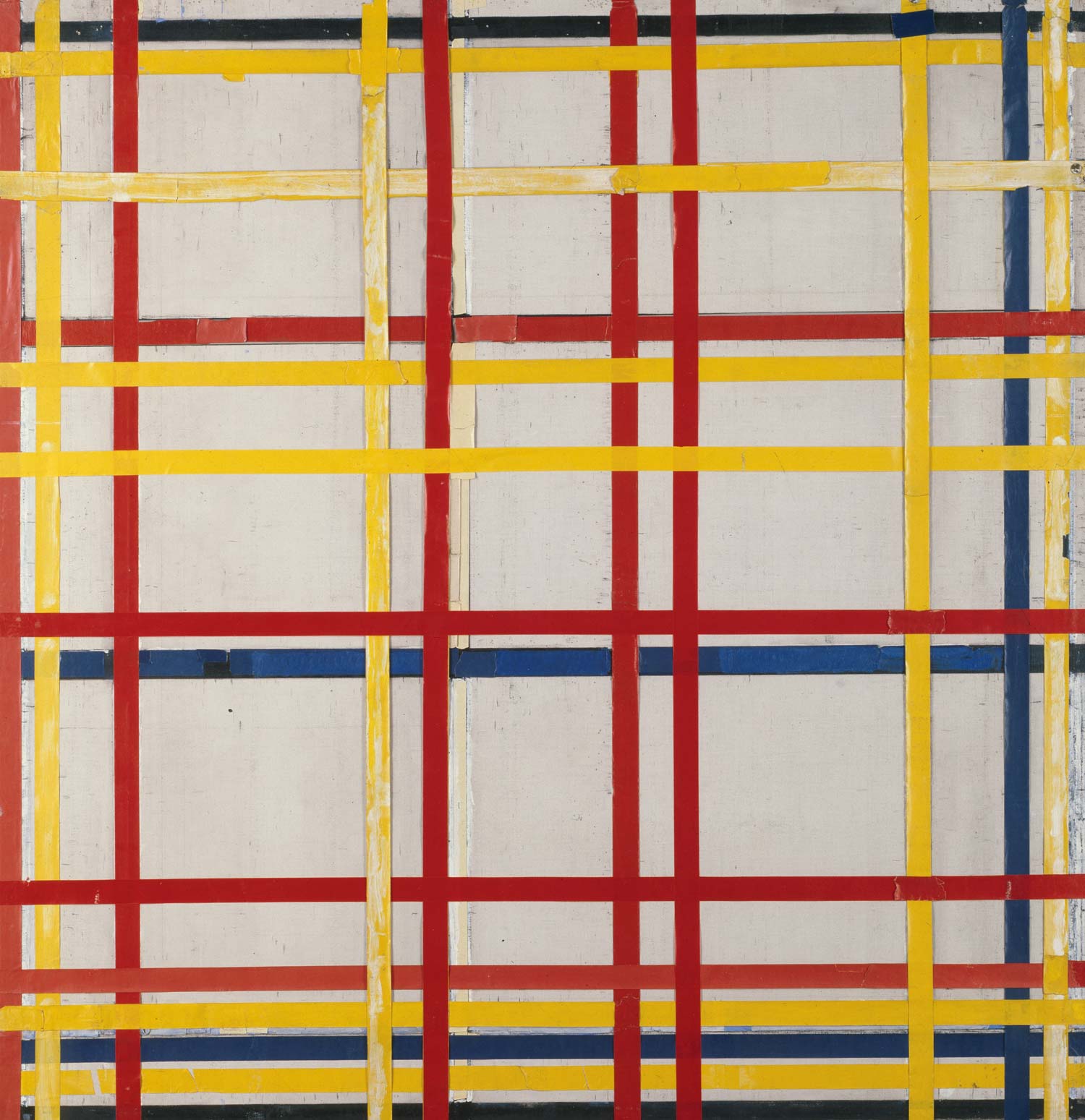
With Neoplasticism, Mondrian’s development seemed to have reached an end point. In 1940, with the outbreak of World War II, Mondrian emigrated to New York, a city with a vibrant cultural and music scene: his style was again affected and changed once more. Mondrian also discovers montage tape as a modern working material, and instead of black line structures and surfaces of white and primary colors, he creates more vibrant and free-form compositions composed of red, yellow and blue adhesive stripes, resulting in works such as the famous New York City 1, which in recent weeks has stirred up several controversies for being incorrectly displayed for more than seventy years.
It becomes clear to the visitor to the exhibition that there are several recurring constants in his work: first, an obvious interest in experimenting with the structures and rhythms of individual patterns and lines. Second, the evocation of the idea of a spiritual and invisible dimension. Finally, Mondrian’s work increasingly focused on the essentials of the image itself, starting with the pattern of nature and continuing with progressive abstraction to the abstract paintings of his later years.
With the curators’ choice to exhibit works with similar themes made in different styles, the concept of evolution so dear to Mondrian emerges perfectly, and it also affects the painter’s signature, as the latter also evolves along with the evolution of his pictorial language. The concept of evolution is not to be understood in the Darwinian sense, but as the conducting of experiments in an attempt to reach another artistic level that in turn brings new conditions, a kind of systematic progression.
Warning: the translation into English of the original Italian article was created using automatic tools. We undertake to review all articles, but we do not guarantee the total absence of inaccuracies in the translation due to the program. You can find the original by clicking on the ITA button. If you find any mistake,please contact us.




























